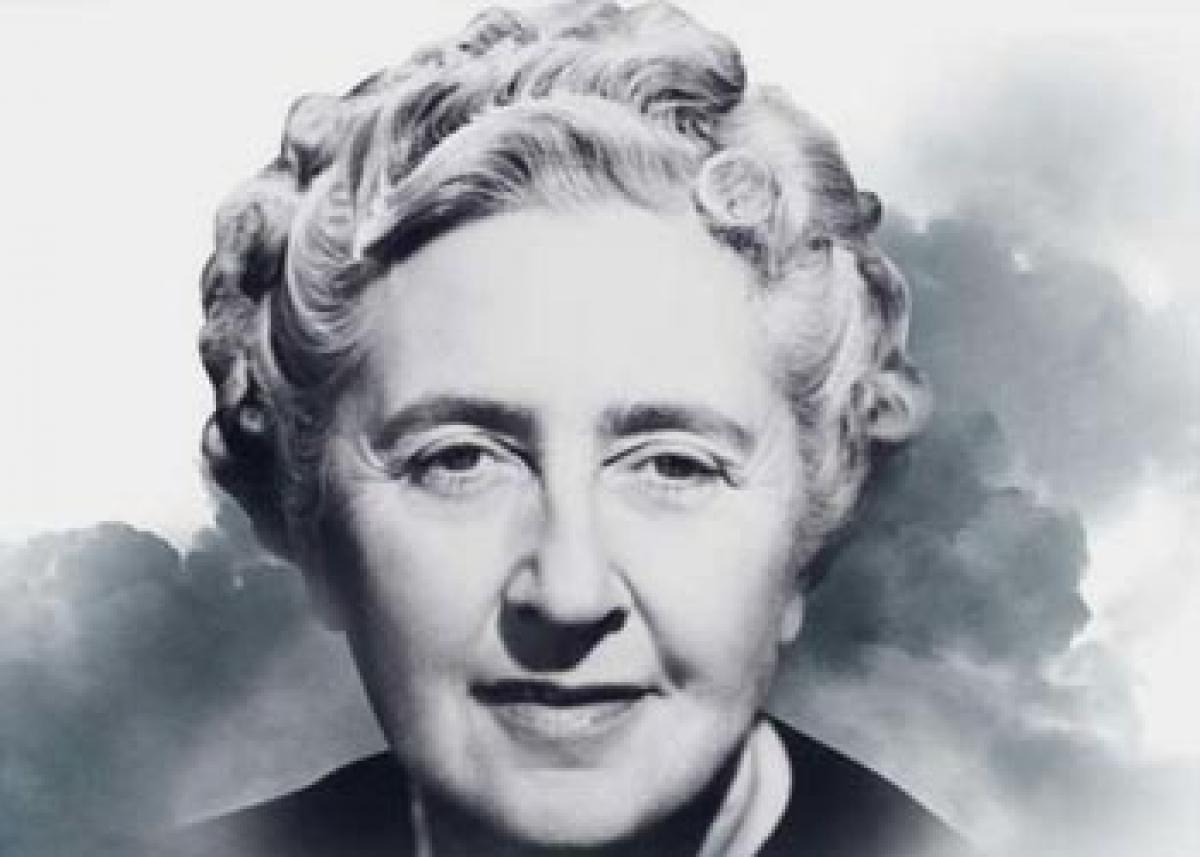Live
- Two Russian oil tankers with 29 on board damaged due to bad weather
- Telangana's Traditions Will Be Protected, Village by Village : BRS Leader MLC K. Kavitha
- Uganda to relocate 5,000 households from landslide-prone areas in eastern region
- Harish Rao Criticizes CM Revanth Reddy: "His Time is Over"
- Vijay Sethupathi Hails 'Vidudala-2' as a Theatrical Game-Changer
- Sahaj Yog: A Path to Inner Transformation and Harmony City takes giant strides
- Allu Arjun meets his uncle Nagababu at his residence
- J&K L-G felicitates Langar organisations & NGOs for contribution during Amarnath Yatra
- Hit by Covid, MP's Rakesh Mishra sees revival of his fortunes, courtesy PM SVANidhi scheme
- Trailblazing Yakshagana Artiste Leelavathi Baipaditthaya No More
Just In

It was not just the quintessential Victorian era poison, arsenic that Queen of Crime Agatha Christie used in her deadly murder-plots to kill-off characters. Her toxic arsenal comprised over 30 compounds including
Kolkata: It was not just the quintessential Victorian era poison, arsenic that Queen of Crime Agatha Christie used in her deadly murder-plots to kill-off characters. Her toxic arsenal comprised over 30 compounds including "examples of native Indian plants as sources for her poisons", says British chemist and author Kathryn Harkup.
In "A is for Arsenic: The Poisons of Agatha Christie", Harkup sheds light on how the author gained the know-how on the lethal compounds while working as a dispenser in Britain and weaved them into her brilliant novels.
"The most underrated aspect of Christie, in my opinion, is how many different poisons she used. There is an assumption that she just used arsenic, but she used over 30 different compounds to kill her characters," Harkup told IANS in an email interaction while in India to attend literary fests in Kolkata and New Delhi.
Dame Agatha Christie is the best-selling novelist of all time, outsold only by the Bible and Shakespeare. She has to her credit over 80 novels and short stories. Her 125th birthday was commemorated worldwide on September 15, 2015.
Christie's considerable knowledge of chemistry and the nitty-gritties of poisons was amassed during her professional years in a pharmacy during both World Wars.
"I have looked into the Ayurveda system of medicine during my research, as Christie used examples of native Indian plants as sources for her poisons.
"Christie would have used atropine, strychnine and aconitine in the preparations she made as an apothecaries assistant. All of these compounds can be obtained from plants that are native to India. I looked at example of the use of these compounds in the Ayurveda system, particularly atropine," Harkup, whose visit was sponsored by the British Council, revealed.
For example, in "4:50 from Paddington", aconitine (monkshood/aconitum napellus) is the central agent, strychnine (strychnos nux vomica) in "The Mysterious Affair at Styles" and atropine (datura) in "The Cretan Bull" or "Caribbean Mystery", said Harkup.
While delving deep into the scientific basis of the use of poisons by Christie, Harkup was amazed by the phenomenal effort the author had put in to clear her apothecaries exams.
"The most interesting thing I learnt was how much studying she had done for her apothecaries exams. She had to learn theoretical and practical chemistry as well as about pharmacy and how to make up prescriptions. She even practised the Marsh Test (the test for arsenic) in preparation for her exams which surprised me."
In fact, the author's most treasured review was from The Pharmaceutical Journal where they praised her book "The Mysterious Affair at Styles" for its scientific accuracy, even though women were not seen as great leaders in science in Christie's day, according to Harkup.
She singles out thallium (featured in "The Pale Horse") and eserine (featured in "Curtain") as major evidence of Christie's breadth of knowledge.
"Thallium, which was so little known about at the time she was writing that doctors consulted her novel for accurate descriptions of poisoning symptoms. Eserine was a drug I had never heard of until I read Christie. Eserine has a fascinating history from its discovery in West Africa to its use in medicine today," Harkup explained.
Respected for her knowledge and accuracy, Christie was also ahead of her time in some instances.
"She used ricin to kill three people in the short story "The House of Lurking Death". Christie was writing almost 50 years before anyone had been murdered using this poison (as far as we know). Unfortunately, because there were no other cases that she could draw on, some of the science is not very accurate.
"Anyone trying to mimic Christie would not be a very successful murderer if they used the method in this story," Harkup pointed out.
Published by Bloomsbury, "A is for Arsenic" also looks at why certain chemicals kill, how they interact with the body, and the feasibility of obtaining, administering, and detecting these poisons, both when Christie was writing and today.
"I hope the book can be seen as not just a science book but also about history and social aspects of science as well as Agatha Christie and her work," added Harkup whose next book is on the science behind Mary Shelley's Frankenstein.

© 2024 Hyderabad Media House Limited/The Hans India. All rights reserved. Powered by hocalwire.com







